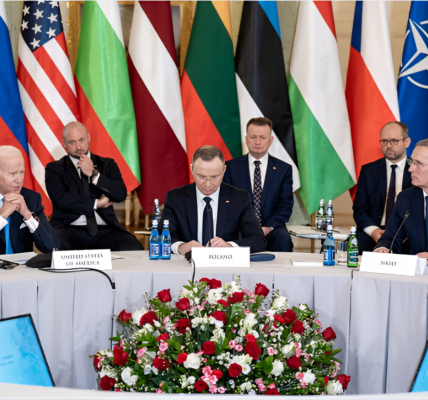
My path to becoming a wargamer was serendipitous. Hired for my insights on national security and my Marine Corps background, I entered wargaming with no prior experience, learning the craft on the job. The field, surprisingly, is built on similar stories of unconventional entries. This is not an anomaly but a pattern.
Across the defense community, wargaming is fueling innovation and shaping critical conversations. The Marine Corps’ 2012 Expeditionary Warrior wargame tackled anti-access/area denial challenges in littoral environments. The Army’s Unified Quest 2019 explored how artificial intelligence could bolster Multi-Domain Battle. From autonomous weapons to crises on the Korean Peninsula, wargames are providing insights into pressing defense issues.
Yet, wargames are only as effective as their designers. Ensuring the longevity and impact of the discipline depends on cultivating the next generation of wargamers—those who can merge time-tested methodologies with cutting-edge technologies.
Wargaming’s Fragile Ecosystem
Today, military wargaming rests on the shoulders of a select few, many of whom pioneered the field in the 1980s and 1990s. This community is often represented by an inverted pyramid: a surplus of senior experts outweighing a limited pool of junior talent. Much of the work relies on civilian contractors and defense industry specialists, which, while effective, is costly and does little to build long-term institutional knowledge.
Without a formal military occupational specialty or an academic degree dedicated to wargaming, professionals in the field often emerge from other domains, such as political science, military operations, or hobbyist board gaming. Education programs exist, but a structured talent pipeline remains elusive. As demand for wargaming grows, the Defense Department must rethink how it identifies, trains, and retains wargamers to ensure the field’s future.
Learning Through Competition
At its core, wargaming simulates the complexities of warfare to analyze human decision-making. Whether testing strategies, educating leaders, or assessing operational plans, wargames thrive on competition. The act of playing repeatedly teaches participants about strategy, chance, and reward. Competition hones their ability to recognize patterns, develop new tactics, and innovate.
To foster the next generation of wargamers, the Defense Department must embrace competition. Organizing wargaming tournaments at military educational institutions would be a powerful start. For example, Marine Corps University has already piloted such tournaments to spark interest and surface creative ideas. Competitions could involve modified commercial board games or digital platforms, with rewards like commendations or challenge coins to recognize exceptional performance.
Digital innovation could further expand accessibility. A distributed wargaming platform, perhaps hosted on a service like Steam or Tabletopia, could connect players across the military. Through this digital library, soldiers at Fort Benning could compete with Marines at Camp Pendleton in Defense Department-approved wargames. Integrated analytics could identify top-performing players with exceptional problem-solving skills—an approach reminiscent of a real-world Ender’s Game scenario.
Such a platform could also host a diverse array of games, from tactical simulations like What Now, Lieutenant? to advanced models like Command. By embracing AI-assisted tools like the Marine Corps’ Athena platform, wargames could simulate complex scenarios, while providing data for military planners to analyze the most effective tactics.
Developing Wargaming Talent
The military’s personnel system does little to encourage specialization in niche fields like wargaming. Officers are expected to pursue varied assignments and rotate positions frequently, leaving little room for cultivating deep expertise.
Take the Marine Corps’ Wargaming Division: while civilian contractors design and analyze games, uniformed officers often act as generalists, lacking the specialized training needed for the role. A systematic approach is needed to identify and prepare those with the interest and aptitude for wargaming.
Educational institutions like the Naval War College and Army War College already offer wargaming courses. Expanding these programs to include beginner-to-advanced curricula would create a structured talent pipeline. Systemic integration of wargaming into professional military education would allow officers and enlisted personnel to refine their skills over time.
Wargaming centers should also have greater autonomy in recruiting and training personnel. By screening candidates for specific roles, establishing inter-service exchanges, and encouraging collaboration, these centers could foster a culture of expertise. Most importantly, wargaming must be valued as a critical skill, with career incentives to match.
Expanding the Talent Pool
To sustain innovation, the wargaming community must extend beyond the military. Broadening the talent pool with academic partnerships and civilian collaborations is vital to avoiding intellectual stagnation.
Programs like Stanford University’s Hacking for Defense (H4D) demonstrate the potential of civilian-military cooperation. By pairing students with Pentagon sponsors to tackle real-world problems, H4D has created a successful model that could be replicated for wargaming. Military institutions could partner with universities to offer wargaming courses, with the eventual goal of establishing wargaming majors or minors.
The Defense Department could further engage civilians by sponsoring unclassified wargames designed for university students. These “Minerva Wargames,” named after the Roman goddess of wisdom and war, could introduce participants to real-world scenarios through single-day events. By fostering diverse perspectives, these initiatives would expose a wide range of individuals to wargaming early in their careers.
The Next Evolution
Wargaming holds immense potential to shape the future of military strategy, tactics, and human-machine collaboration. But for the discipline to thrive, the Defense Department must invest in the next generation. By encouraging competition, expanding education, and forging civilian partnerships, wargaming can evolve to meet the challenges of tomorrow.
The tools are already within reach. Now, it’s time to let them compete.




